Sediment Mobility, Scour and Seabed Disturbance Consideration for Offshore Wind Development
Starts: Thu, Sep 9, 2021 8:00 AM CSTEnds: Thu, Sep 9, 2021 10:30 AM CST
Become a Member Now
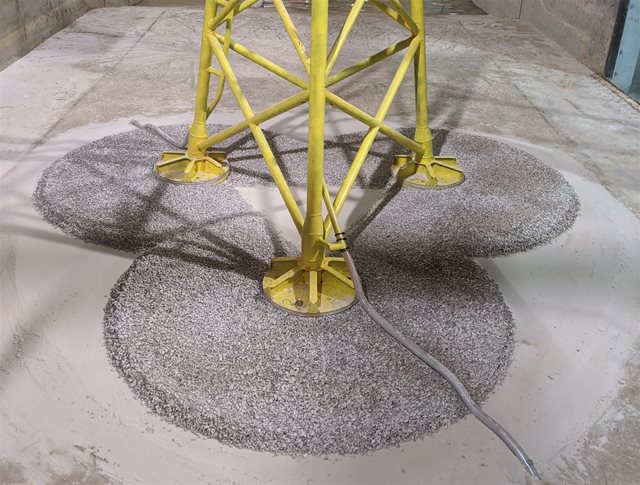
Registration:
SUT Members: $100
SUT Non-Members $125
SUT Student Members: Free
SUT Student Non-Members: $15
Student registrations are only valid using ‘.edu’ or corresponding institutional email domains. Connections are unique and should only be used by one person. Duplicate connection will be forced out of the webinar session by the organizers.
Professional Development Hour Cerficates:
2.5 PDH certicates will be issued a day after the presentation. If you have more than one person viewing these webinars at your location, you can request additional PDH certificates for $10 at the email above.
Webinar Session Program
| 8:00AM CDT |
Welcome & Introduction Tricia Hill, Society for Underwater Technology in the US (SUT-US); Dr. Xiaoyan Long, Fugro |
| 8:10AM CDT |
Sediments on the move? Understanding the local geology and geomorphodynamics of the US Atlantic coast and continental shelf for offshore wind development Dr. Nina Stark, Virginia Tech Local seabed geology and geomorphology are key factors for the site assessment and design of offshore wind developments. Both can vary on large or small spatial scales calling for smart designs of site investigation strategy as well as later design of foundations and cable routes. However, special attention should also be given to temporal variations of geomorphodynamics in terms of sediment erosion, deposition, and migration which may change the landscape of an area significantly over time. Particularly climate change including sea level rise, change of storm patterns, intensity, and frequency, may introduce additional uncertainties and importance regarding active geomorphodynamics in areas of interest. This presentation provides an overview of local geology and geomorphology of the US Atlantic continental shelf and relevant geomorphodynamic processes affecting offshore wind development. |
| 8:30AM CDT |
Overview of Block Island Windfarm’s Cable Shore Crossing Incidents and Solutions to Preventing them in the Future Mr. David McLaurin, Intecsea Engineering/Advisian National Grid’s portion of Block Island Wind Farm’s power transmission export cable (from The substation at Block Island to the mainland) has been experiencing issues since it was installed in 2016. While there have been no problems with the cable’s landing point on the mainland, in Narragansett, where a horizontal directional drill (HDD) was performed at the shore crossing to bury it deep below the beach area, it’s been a different story on the Block Island side. At Block Island, a less expensive, shallower jet plow method was used to cross the shoreline. The shore crossing location at Block Island ended up more rocky than expected and burial depths for the cable were not sufficient to avoid exposure of the cable at multiple locations. With time, exposed sections of this cable have been exacerbated. In recent months, National Grid started preparing to install the new stretch of cable through its HDD pipe at Block island, when workers discovered unexpected obstructions. They are working with contractors to clear the blockages, but have decided to halt installation until a solution if found regarding the sand, mud and other obstructions on the seabed. On the other side, Orstead’s inter-array cable (from the wind turbines to the Substation at Block Island) also had similar issues at the shore crossing location on Block island. Recently, Orstead corrected these issues with an HDD and a new cable was installed and spliced into the rest of the system. Seabed scour is widely recognized as a difficult engineering problem which is likely to cause instability of buried cables at the shore crossing. This discussion will address the conditions and design issues that caused these incidents with the goal of preventing similar issues on future projects in offshore wind in the NE USA. This includes discussion on scour, other causes for unburial, prevention, and mitigations. |
| 8:50AM CDT |
Scour Mitigation at Offshore Wind Foundations Dr. John Harris, HR Wallingford, UK There are a range of approaches that can be taken to prevent or mitigate against scour around foundations, either planned for or as a remedial measure if scour is more severe than was expected. Rock armour has been the most commonly used form of scour protection at offshore wind farms using gravel, quarry run stone or blasted rock to cover a particular area of seabed to a specified thickness. In addition, other approaches include monitoring of the seabed around foundations, with the design philosophy for the monopile foundations involving installing them without scour protection. The presentation will provide an overview of scour protection measures, outlining the principle approaches in common use including examples from built wind farms. It will also look at the approaches adopted in a range of seabed soil conditions as well as the effects that can be induced by the placement of scour protection measures including secondary scour. The talk will also touch upon recently discussed issues of cable damage over the placed scour protection. |
| 9:10AM CDT | Sponsor Presentation |
| 9:20AM CDT |
Scour Hazard and Implication for Renewable Foundations and Cables Dr. Joe Tom, University of Illinois Urbana-Champaign Scour is a nearly ubiquitous risk for offshore renewable energy infrastructure, particularly in the relatively shallow waters where most current developments exist. Local scour is the process in which the seabed is transported away from a structure (e.g., the foundation or seabed cables) due to moving water, such as induced by waves and currents. Unless prevented through scour protection, sediment loss caused by scour around foundations can lead not only to reductions in foundation capacity and system stability but also changes in the structural dynamics of wind energy systems, affecting energy harvesting uptime and production. Although many export cables tend to be buried, scour presents complicated risks for unburied cables. These risks include the potential for vortex-induced vibrations and cable fatigue associated with free-span development as well as changes in the burial conditions that can lead to inefficiency in cable thermal design and management. In this presentation, we will first briefly visit the primary mechanics that lead to local scour (a complex interplay between fluid mechanics and soil mechanics) around foundations and cables. This will then lead us to an overview of the impact of scour on monopile foundations in particular. Finally, we will discuss learnings from the oil and gas industry on sediment transport effects for unburied cables and the potential implications of this for renewable energy. |
| 9:50AM CDT |
Benthic Impact Considerations for Installing Infrastructure for Offshore Wind Dr. Sarah Courbis, Advisian Installation of turbines, substations, and cables for offshore wind will have impacts on benthic habitat and organisms. Hundreds of fixed and floating turbines will likely be installed in US waters in the next 10 years, and dozens of cables will be needed to bring power to shore. In most cases, cables are buried where substrate allows, though floating wind in deeper waters may use mid-water cables among turbines in some cases. Installing moorings, monopiles, jackets, substations, and other infrastructure and laying and burying cables on the bottom involves pile driving, dredging, trenching, dumping, and application of scour protection which can cause impacts to sensitive habitat, release contaminants in sediment, generate localized turbidity, and create substrates for benthic organisms to colonize. Cables that cannot be buried in sediment may be buried with rocks or mattresses that keep them in place, and concerns about electromagnetic fields and other disturbances from cables will need to be addressed through research and mitigation such as cable sheathing and burial depths. Permitting for windfarm infrastructure installation involves multiple state and federal agencies which operate under different statutes with different environmental compliance requirements. Dr. Courbis will discuss the challenges and solutions related to permitting and benthic impacts and compliance for offshore wind development. |
| 10:10AM CDT |
Panel Q&A Session Dr. Xiaoyan Long, Fugro |
| 10:30AM CDT |
Closing Remarks Andrew Hill, BP |
About the presenters:
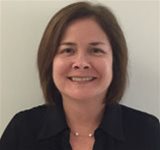 Tricia Hill, President and Chair, SUT – US Branch Tricia Hill is a Georgia Tech graduate with a Bachelors of Mechanical Engineering degree. Tricia has been in the offshore oil and gas industry for almost 25 years with substantial experience in flexible pipe design, analysis, testing, manufacturing, and commercial operations. In 2021, Tricia joined NOV Fiberglass Systems where she is Sales Director for the Marine and Offshore markets. Tricia has been a member of the Society of Underwater Technology since 2015, a Fellow member since 2019, and President and Chair of the US branch starting in 2021. With her leadership, SUT-US started a mentorship program, launched the 1st on-line engineering competition for college students and young professionals, and developed the Women in Industry special interest group.
Tricia Hill, President and Chair, SUT – US Branch Tricia Hill is a Georgia Tech graduate with a Bachelors of Mechanical Engineering degree. Tricia has been in the offshore oil and gas industry for almost 25 years with substantial experience in flexible pipe design, analysis, testing, manufacturing, and commercial operations. In 2021, Tricia joined NOV Fiberglass Systems where she is Sales Director for the Marine and Offshore markets. Tricia has been a member of the Society of Underwater Technology since 2015, a Fellow member since 2019, and President and Chair of the US branch starting in 2021. With her leadership, SUT-US started a mentorship program, launched the 1st on-line engineering competition for college students and young professionals, and developed the Women in Industry special interest group. 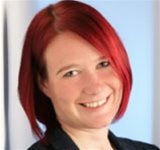 Dr. Nina Stark, Associate Professor, Virginia Tech
Dr. Nina Stark, Associate Professor, Virginia TechNina Stark is an associate professor in the geotechnical engineering program at Virginia Tech. She received her MS in Geophysics in 2007 from the University of Muenster, Germany, working with the German Naval Research Institute for Underwater Acoustics and Geophysics on mine burial prediction. In 2011, she received her PhD working on the in-situ geotechnical investigation of sediment remobilization processes at MARUM-Center for Marine and Environmental Sciences at the University of Bremen, Germany. In the framework of her PhD, she developed a novel portable free fall penetrometer that enables geotechnical seabed probing under energetic hydrodynamics, and pioneered in-situ measurements of seabed surface hardening and softening associated to active sediment remobilization processes. Nina joined Dalhousie University, Canada, as a postdoctoral fellow in 2012 after continuing some of her PhD work as a postdoctoral fellow at MARUM. She joined Virginia Tech in 2013. Her research is focused on coastal geotechnics, coastal and marine field surveying methods, subaqueous sediment dynamics, beach trafficability, and offshore renewable energy. Nina has co-led teams for the Geotechnical Extreme Events Reconnaissance (GEER) association in response to Hurricanes Harvey and Irma in 2017, and she has received the NSF CAREER award and the ONR Young Investigator award in 2018. Nina has been awarded the Anthony and Catherine Moraco Faculty Fellowship in 2019.
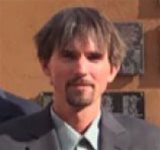 David McLaurin, Intecsea Engineering/Advisian
David McLaurin, Intecsea Engineering/AdvisianDavid McLaurin has been involved with the offshore energy industry for 15 years as a subsea engineer. He has experience across many disciplines including submarine HVDC, HVAC and MVAC systems, primarily in the GOM, offshore West Africa and offshore NE USA. His primary areas of focus are offshore dynamic and static cables and umbilicals, wind power distribution (including offshore substations), electrical controls (P/C), hydraulic controls, chemical injection systems, seafloor boosting (among other subsea processing), subsea routing, and electrical flowline heating. He also has significant working knowledge of subsea cabling and equipment installation. His most recent efforts regarding energy transition included study development and presentation on the topic of electrification of offshore oil and gas facilities via floating wind power for NEIA, NOIA and the Oil and Gas Corporation of Newfoundland and Labrador.
 Dr. John Harris, Technical Director Coasts and Oceans Group, HR Wallingford
Dr. John Harris, Technical Director Coasts and Oceans Group, HR WallingfordDr John Harris is a Technical Director in the Coasts and Oceans group at HR Wallingford and is both a Chartered Engineer and Chartered Marine Scientist. He has over 30 years’ experience in coastal and offshore studies and is one of the UK’s authorities on marine scour. Over the last 20 years John has worked on various aspects of offshore wind farm developments and has worked on around 80% of built or currently planned wind farms in the UK as well as wind farms in European waters, China, Taiwan and the USA. He is the co-author of several industry guidance documents including “Dynamics Of Scour Pits And Scour Protection” and the COWRIE “Modelling Best Practice Guide”. John was the Chair of the Editorial Panel for the Institution of Civil Engineers Maritime Engineering Journal from 2016 – 2020 and between 2017 - 2020 the Royal Academy of Engineering Visiting Professor in Coastal and Offshore Engineering at UCL. John is currently the Visiting Professor in Coastal and Offshore Engineering at UCL.
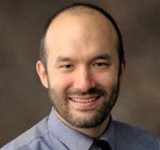 Joe Tom, Assistant Professor, University of Illinois at Urbana-Champaign
Joe Tom, Assistant Professor, University of Illinois at Urbana-ChampaignJoe Tom is an Assistant Professor in the Department of Civil and Environmental Engineering at the University of Illinois at Urbana-Champaign since January 2020. Prior to joining UIUC, he was a Research Fellow at the Centre for Offshore Foundation Systems at the University of Western Australia (UWA) and a Senior Geotechnical Engineering at Advanced Geomechanics (now Fugro) in Perth, Australia. Joe received his PhD from UWA in 2018, MSCE from the University of California, Davis and a BSCE from Mississippi State University. His research interests including scour and stability of coastal/seabed infrastructure, whole-life strength changes due to cyclic loading, novel foundations, and anchors, and using measurement while drilling for site investigations.
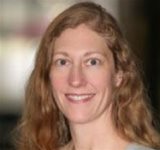 Dr. Sarah Courbis, Senior Scientist, Advisian Sarah has been working in marine science and regulation for over 25 years. She focuses on marine protected species and specializes in impact assessment, permitting and compliance, and mitigation. She is a senior scientist with Advisian/Worley Group. Her work in offshore energy includes Construction and Operations Plans, NEPA documentation and consultations (such as ESA, EFH, NHPA, NMSA), siting and planning, agency and stakeholder engagement, development of practicable mitigation, MMPA authorizations, CZMA consistency, and public comment support for organizations. In addition to work in offshore wind, she has supported environmental assessment and compliance for LNG, seismic, fisheries, coastal development, marine hydrokinetics (tidal and wave energy), and O&G projects.
Dr. Sarah Courbis, Senior Scientist, Advisian Sarah has been working in marine science and regulation for over 25 years. She focuses on marine protected species and specializes in impact assessment, permitting and compliance, and mitigation. She is a senior scientist with Advisian/Worley Group. Her work in offshore energy includes Construction and Operations Plans, NEPA documentation and consultations (such as ESA, EFH, NHPA, NMSA), siting and planning, agency and stakeholder engagement, development of practicable mitigation, MMPA authorizations, CZMA consistency, and public comment support for organizations. In addition to work in offshore wind, she has supported environmental assessment and compliance for LNG, seismic, fisheries, coastal development, marine hydrokinetics (tidal and wave energy), and O&G projects.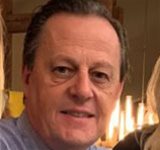 Andrew Hill, Technical Authority for Marine Geohazards, BP
Andrew Hill, Technical Authority for Marine Geohazards, BPAndy W. Hill is the Engineering Technical Authority for Marine Geohazards for BP. He is currently Chair of the OSIG Houston Committee, having been the founder of the committee in 2007. He has been a member of the UK equivalent committee since 1990. He was made a Fellow of the SUT in 2020. He has 38 years of experience in Geophysical Site Investigation, the last 32 with BP. In 1997 he championed the introduction of AUVs into deep water site investigation triggering a step change in deliver after their introduction in 2000-01. He has worked on projects globally and introduced or championed some of the most significant developments in geophysical site investigation. He has published widely on the subject and been director or contributor to numerous industry documents.
 Dr. Xiaoyan Long, Deputy Engineering Manager, Fugro
Dr. Xiaoyan Long, Deputy Engineering Manager, FugroXiaoyan Long is the deputy Engineering Manager for Fugro USA Marine, Inc. She has over 15 years of consultancy and management experience in offshore geotechnical engineering field and is a registered professional engineer in Texas and Ohio. She obtained her Master degree from Tongji University in China in 2000, and her Doctor of Philosophy from Texas A&M university in 2006. Xiaoyan specializes in marine site characterization, offshore foundation engineering, well geotechnics, interdisciplinary geo-hazard assessment including slope stability, mudslide and gas hydrate studies and soil-structure interaction. She has authored/coauthored more than 25 technical publications in geotechnical engineering field and is serving on the SUT OSIG technical committee.
Sponsorships Available:
Are you interested in sponsoring this event? Click here to contact us.
Contribute to our Scholarship Program and Student Chapter Sponsorships:
Pay as you are able to support the SUT-US and our learning programs including our annual scholarship program and student chapter sponsorships.
You can request a business receipt by contacting us at communications@sut-us.org
Enter your name and email in the Paypal form below, then click Pay Now to enter the amount you would like to pay.
Important Notes:
- SUT-US is currently registered as a 501-C6 entity. We are in the process of transitioning to a 501-C3 organization.
- We will provide a business receipt specifying the title, date, and amount of the event, for which you are contributing.
- Donation receipts will be provided when SUT-US finalizes its transition as 501-C3.
- You can view the webinar on the web app using a Google Chrome or Firefox browser preferably. Go to www.gotomeeting.com/webinar and clic 'Join' at the top right of the screen (above 'Start for Free' blue buttom). You will be prompted to enter the 9-digit Webinar ID (included in the email receive with the webinar information) and your business email.
-
If you add the following code to the end of your webinar attendee join links it will force you to join using the Instant Join app:
?clientType=html5
So your join link will end up looking like the example below: https://global.gotowebinar.com/join/1142918520461700609/8303729?clientType=html5
- You can download the desktop app using the following link: https://support.goto.com/webinar/help/download-now-g2w010002. We strongly suggest you download and install the app the day prior to the actual session to avoid last minute technical issues.
- You can also attend the session using your mobile phone. The following link provides useful information on installing the app and joining a webinar: https://support.goto.com/webinar/help/gotowebinar-for-mobile-devices-g2w050033
- If you have a question and/or comment for the presenters or organizers, you can contact them throught the 'Questions tab' in your control panel, or the 'Chat' located at the end of your control panel as well.
- For further support and frequently asked questions visit the GoToWebinar support page: https://support.goto.com/webinar




 Add this Event to your
Add this Event to your

